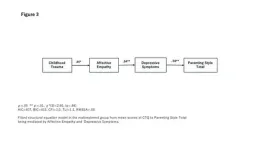(Press-News.org) Tropical cyclones are hurricanes that brew over the tropical ocean and can travel over land, inundating coastal regions. The most extreme cyclones can generate devastating storm tides — seawater that is heightened by the tides and swells onto land, causing catastrophic flood events in coastal regions. A new study by MIT scientists finds that, as the planet warms, the recurrence of destructive storm tides will increase tenfold for one of the hardest-hit regions of the world.
In a study that will appear in One Earth, the scientists report that, for the highly populated coastal country of Bangladesh,what was once a 100-year event could now strike every 10 years — or more often — by the end of the century.
In a future where fossil fuels continue to burn as they do today, what was once considered a catastrophic, once-in-a-century storm tide will hit Bangladesh, on average, once per decade. And the kind of storm tides that have occurred every decade or so will likely batter the country’s coast more frequently, every few years.
Bangladesh is one of the most densely populated countries in the world, with more than 171 million people living in a region roughly the size of New York state. The country has been historically vulnerable to tropical cyclones, as it is a low-lying delta that is easily flooded by storms and experiences a seasonal monsoon. Some of the most destructive floods in the world have occurred in Bangladesh, where it’s been increasingly difficult for agricultural economies to recover.
The study also finds that Bangladesh will likely experience tropical cyclones that overlap with the months-long monsoon season. Until now, cyclones and the monsoon have occurred at separate times during the year. But as the planet warms, the scientists’ modeling shows that cyclones will push into the monsoon season, causing back-to-back flooding events across the country.
“Bangladesh is very active in preparing for climate hazards and risks, but the problem is, everything they’re doing is more or less based on what they’re seeing in the present climate,” says study co-author Sai Ravela, principal research scientist in MIT’s Department of Earth, Atmospheric and Planetary Sciences (EAPS). “We are now seeing an almost tenfold rise inthe recurrence of destructive storm tides almost anywhere you look in Bangladesh. This cannot be ignored. So, we think this is timely, to say they have to pause and revisit how they protect against these storms.”
Ravela’s co-authors are Jiangchao Qiu, a postdoc in EAPS, and Kerry Emanuel, professor emeritus of atmospheric science at MIT.
Height of tides
In recent years, Bangladesh has invested significantly in storm preparedness, for instance in improving its early-warning system, fortifying village embankments, and increasing access to community shelters. But such preparations have generally been based on the current frequency of storms.
In this new study, the MIT team aimed to provide detailed projections of extreme storm tide hazards, which are flooding events where tidal effects amplify cyclone-induced storm surge, in Bangladesh under various climate-warming scenarios and sea-level rise projections.
“A lot of these events happen at night, so tides play a really strong role in how much additional water you might get, depending on what the tide is,” Ravela explains.
To evaluate the risk of storm tide, the team first applied a method of physics-based downscaling, which Emanuel’s group first developed over 20 years ago and has been using since to study hurricane activity in different parts of the world. The technique involves a low-resolution model of the global ocean and atmosphere that is embedded with a finer-resolution model that simulates weather patterns as detailed as a single hurricane. The researchers then scatter hurricane “seeds” in a region of interest and run the model forward to observe which seeds grow and make landfall over time.
To the downscaled model, the researchers incorporated a hydrodynamical model, which simulates the height of a storm surge, given the pattern and strength of winds at the time of a given storm. For any given simulated storm, the team also tracked the tides, as well as effects of sea level rise, and incorporated this information into a numerical model that calculated the storm tide, or the height of the water, with tidal effects as a storm makes landfall.
Extreme overlap
With this framework, the scientists simulated tens of thousands of potential tropical cyclones near Bangladesh, under several future climate scenarios, ranging from one that resembles the current day to one in which the world experiences further warming as a result of continued fossil fuel burning. For each simulation, they recorded the maximum storm tides along the coast of Bangladesh and noted the frequency of storm tides of various heights in a given climate scenario.
“We can look at the entire bucket of simulations and see, for this storm tide of say, 3 meters, we saw this many storms, and from that you can figure out the relative frequency of that kind of storm,” Qiu says. “You can then invert that number to a return period.”
A return period is the time it takes for a storm of a particular type to make landfall again. A storm that is considered a “100-year event” is typically more powerful and destructive, and in this case, creates more extreme storm tides, and therefore more catastrophic flooding, compared to a 10-year event.
From their modeling, Ravela and his colleagues found that under a scenario of increased global warming, the storms that previously were considered 100-year events, producing the highest storm tide values, can recur every decade or less by late-century. They also observed that, toward the end of this century, tropical cyclones in Bangladesh will occur across a broader seasonal window, potentially overlapping in certain years with the seasonal monsoon season.
“If the monsoon rain has come in and saturated the soil, a cyclone then comes in and it makes the problem much worse,” Ravela says. “People won’t have any reprieve between the extreme storm and the monsoon. There are so many compound and cascading effects between the two. And this only emerges because warming happens.”
Ravela and his colleagues are using their modeling to help experts in Bangladesh better evaluate and prepare for a future of increasing storm risk. And he says that the climate future for Bangladesh is in some ways not unique to this part of the world.
“This climate change story that is playing out in Bangladesh in a certain way will be playing out in a different way elsewhere,” Ravela notes. “Maybe where you are, the story is about heat stress, or amplifying droughts, or wildfires. The peril is different. But the underlying catastrophe story is not that different.”
This research is supported in part by the MIT Climate Resilience Early Warning Systems Climate Grand Challenges project, the Jameel Observatory JO-CREWSNet project; MIT Weather and Climate Extremes Climate Grand Challenges project; and Schmidt Sciences, LLC.
###
Written by Jennifer Chu, MIT News
END
Hundred-year storm tides will occur every few decades in Bangladesh, scientists report
With projected global warming, the frequency of extreme storms will ramp up by the end of the century, according to a new study
2025-04-11
ELSE PRESS RELEASES FROM THIS DATE:
Kidney function following COVID-19 in children and adolescents
2025-04-11
About The Study: In this large U.S. cohort study of children and adolescents, SARS-CoV-2 infection was associated with a higher risk of adverse postacute kidney outcomes, particularly among those with preexisting chronic kidney disease or acute kidney injury, suggesting the need for vigilant long-term monitoring.
Corresponding Author: To contact the corresponding author, Yong Chen, PhD, email ychen123@pennmedicine.upenn.edu.
To access the embargoed study: Visit our For The Media website ...
Risk factors for severe disease among children hospitalized with RSV
2025-04-11
About The Study: In this cohort study of children hospitalized with respiratory syncytial virus (RSV) in 2022 and 2023, severe RSV disease was more likely among those age 2 or older with pulmonary and neurologic, neuromuscular, or developmental conditions. For children younger than 2 years, age younger than 6 months and prematurity were the main risk factors. These findings support prevention strategies for all younger children, including premature infants, with potential benefit for children age 2 or older ...
Watch a live catalytic event in real time
2025-04-11
A Northwestern University-led international team of scientists has, for the first time, directly observed catalysis in-action at the atomic level.
In mesmerizing new videos, single atoms move and shake during a chemical reaction that removes hydrogen atoms from an alcohol molecule. By viewing the process in real time, the researchers discovered several short-lived intermediate molecules involved in the reaction as well as a previously hidden reaction pathway.
The observations were made possible by single-molecule atomic-resolution time-resolved electron microscopy (SMART-EM), a powerful instrument that enables researchers to watch individual ...
Top medical research expert Mark T. Esser named inaugural head of UVA’s Manning Institute
2025-04-11
The University of Virginia has named Mark T. Esser, PhD, a premier expert in the development of new medical treatments and tests, to lead the upcoming Paul and Diane Manning Institute of Biotechnology and bring to life the institute’s ambitious plans for a healthier tomorrow for people across the world.
In his role as the inaugural chief scientific officer and head of the Manning Institute, Esser will be charged with capitalizing on the cutting-edge biomedical research under way at UVA and UVA Health to tackle some of the greatest challenges in medicine and accelerate the development of new treatments and cures.
In ...
Protein GSK3β offers new angle on overcoming melanoma drug resistance
2025-04-11
“Inhibitors of GSK3β reduce the cell viability of BRAFi-resistant melanoma cell lines and thus may holds promise as a novel strategy to overcome BRAFi resistance and melanoma progression.”
BUFFALO, NY – April 11, 2025 – A new research perspective was published in Oncotarget, Volume 16, on April 4, 2025, titled “GSK3β activation is a key driver of resistance to Raf inhibition in BRAF mutant melanoma cells.”
In this work, first author Diana Crisan and corresponding author Abhijit Basu from the University Hospital Ulm led ...
Mimickers and associated neoplasms of Castleman disease
2025-04-11
Castleman disease (CD) is a rare, non-clonal lymphoproliferative disorder that manifests with a wide range of histologic and clinical features. It is classified clinically into unicentric (UCD) and multicentric (MCD) forms and histopathologically into hyaline vascular (HV-CD), plasma cell (PC-CD), and mixed types. UCD typically presents as an isolated lymph node enlargement, often asymptomatic, whereas MCD involves multiple nodal sites and systemic symptoms. MCD may be associated with human herpesvirus 8 (HHV8), idiopathic origins (iMCD), POEMS syndrome, or TAFRO ...
Preserving and using the deep sea: scientists call for more knowledge to enable sustainable management
2025-04-11
Where does the deep sea begin? Definitions vary across science and legal frameworks. For the purposes of their joint analysis, the members of the European Marine Board’s (EMB) Deep Sea and Ocean Health Working Group defined the deep sea as the water column and seabed below 200 metres. Below this point, sunlight barely penetrates the water, and the habitat changes dramatically. According to this definition, the deep sea accounts for about 90 per cent of the ocean’s volume. Its importance for ...
Breaking the cycle: unveiling how childhood trauma fuels parenting and abuse
2025-04-11
Childhood maltreatment (CM) is a complex issue that is often passed on through generations. Studies have shown that parents who were abused as children may perpetuate a similar pattern of mistreating their children, creating a vicious cycle of abuse. A key factor in perpetuating this cycle is impaired empathy in parents who grew up in abusive environments. Simply put, parental empathy, the ability to understand and respond to children’s emotions, plays a critical role in effective parenting. In fact, children who experience abuse tend to have reduced empathy by the age ...
A new era in materials science: antiferromagnetic quasicrystals unveiled
2025-04-11
Quasicrystals (QCs) are fascinating solid materials that exhibit an intriguing atomic arrangement. Unlike regular crystals, in which atomic arrangements have an ordered repeating pattern, QCs display long-range atomic order that is not periodic. Due to this ‘quasiperiodic’ nature, QCs have unconventional symmetries that are absent in conventional crystals. Since their Nobel Prize-winning discovery, condensed matter physics researchers have dedicated immense attention towards QCs, attempting to both realize their unique quasiperiodic magnetic order and ...
From boring to bursting: a giant black hole awakens
2025-04-11
Although we know that supermassive black holes (millions of times the mass of our Sun) lurk at the centre of most galaxies, their very nature makes them difficult to spot and study. In contrast to the popular idea of black holes constantly ‘gobbling up’ matter, these gravitational monsters can spend long periods of time in a dormant, inactive phase.
This was true of the black hole at the heart of SDSS1335+0728, a distant and unremarkable galaxy 300 million light-years away in the constellation of Virgo. After being inactive for decades, it suddenly lit up and recently began producing unprecedented flashes of X-ray light.
The first signs ...
LAST 30 PRESS RELEASES:
Lower doses of immunotherapy for skin cancer give better results
Why didn’t the senior citizen cross the road? Slower crossings may help people with reduced mobility
ASH 2025: Study suggests that a virtual program focusing on diet and exercise can help reduce side effects of lymphoma treatment
A sound defense: Noisy pupae puff away potential predators
Azacitidine–venetoclax combination outperforms standard care in acute myeloid leukemia patients eligible for intensive chemotherapy
Adding epcoritamab to standard second-line therapy improves follicular lymphoma outcomes
New findings support a chemo-free approach for treating Ph+ ALL
Non-covalent btki pirtobrutinib shows promise as frontline therapy for CLL/SLL
University of Cincinnati experts present research at annual hematology event
ASH 2025: Antibody therapy eradicates traces of multiple myeloma in preliminary trial
ASH 2025: AI uncovers how DNA architecture failures trigger blood cancer
ASH 2025: New study shows that patients can safely receive stem cell transplants from mismatched, unrelated donors
Protective regimen allows successful stem cell transplant even without close genetic match between donor and recipient
Continuous and fixed-duration treatments result in similar outcomes for CLL
Measurable residual disease shows strong potential as an early indicator of survival in patients with acute myeloid leukemia
Chemotherapy and radiation are comparable as pre-transplant conditioning for patients with b-acute lymphoblastic leukemia who have no measurable residual disease
Roughly one-third of families with children being treated for leukemia struggle to pay living expenses
Quality improvement project results in increased screening and treatment for iron deficiency in pregnancy
IV iron improves survival, increases hemoglobin in hospitalized patients with iron-deficiency anemia and an acute infection
Black patients with acute myeloid leukemia are younger at diagnosis and experience poorer survival outcomes than White patients
Emergency departments fall short on delivering timely treatment for sickle cell pain
Study shows no clear evidence of harm from hydroxyurea use during pregnancy
Long-term outlook is positive for most after hematopoietic cell transplant for sickle cell disease
Study offers real-world data on commercial implementation of gene therapies for sickle cell disease and beta thalassemia
Early results suggest exa-cel gene therapy works well in children
NTIDE: Disability employment holds steady after data hiatus
Social lives of viruses affect antiviral resistance
Dose of psilocybin, dash of rabies point to treatment for depression
Helping health care providers navigate social, political, and legal barriers to patient care
Barrow Neurological Institute, University of Calgary study urges “major change” to migraine treatment in Emergency Departments
[Press-News.org] Hundred-year storm tides will occur every few decades in Bangladesh, scientists reportWith projected global warming, the frequency of extreme storms will ramp up by the end of the century, according to a new study






